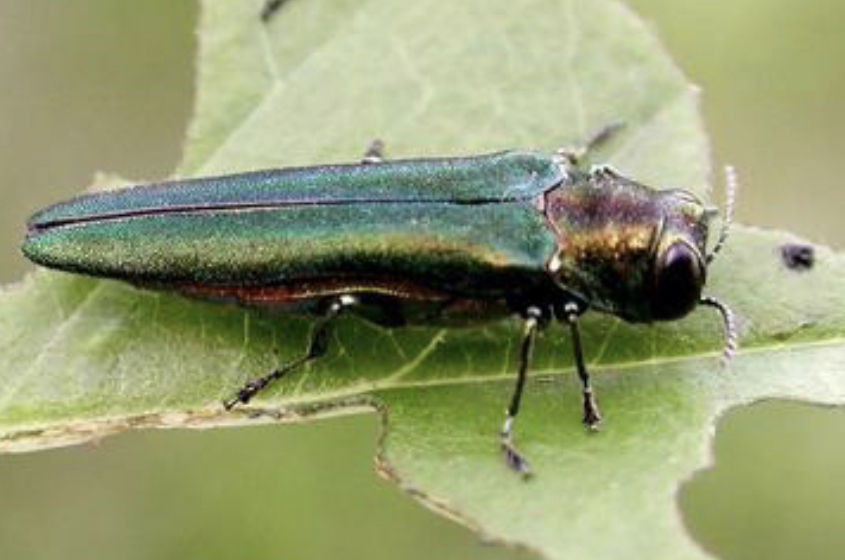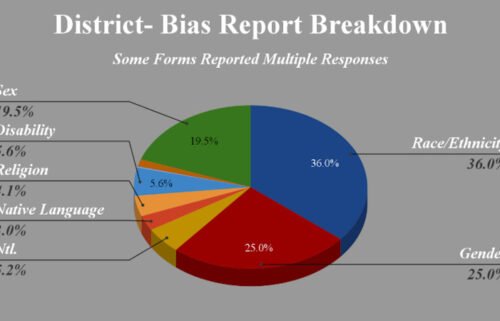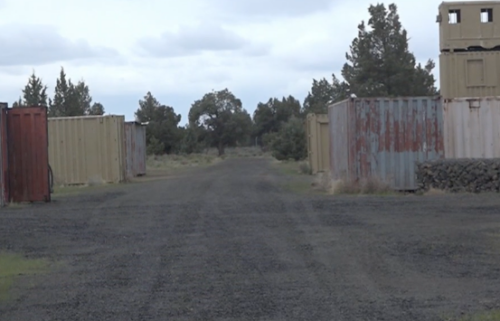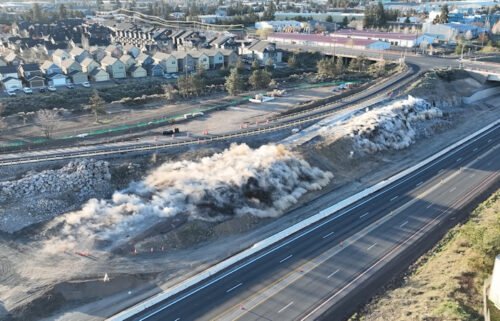Destructive forest pest, the emerald ash borer, arrives in Oregon; public asked to report sightings

Dad making summer camp pickup in Forest Grove makes first known West Coast sighting
FOREST GROVE, Ore – On June 30, Dominic Maze, an invasive species biologist for the City of Portland, was waiting outside a summer camp in Forest Grove to pick up his children when he noticed several ash trees in decline.
When he took a closer look, he recognized the distinctive D-shaped holes made by adult emerald ash borers, an invasive and destructive pest, as they exit an infested tree.
“When my kids arrived, I asked them to look for adult beetles,” said Maze. “My son promptly found one crawling on him. Knowing how many millions of ash trees across the country these beetles have killed, I felt like I was going to throw up.”
Maze’s discovery of EAB in a parking lot in Forest Grove is the first known sighting on the West Coast. Maze was familiar with EAB and signs of it in ash trees through educational materials federal and state agencies have been providing to Portland and other Oregon cities. He immediately called the Oregon Department of Forestry’s Forest Health Unit to report the EAB sighting.
ODF Forest Entomologist Christine Buhl drove to the site that same day and identified an adult EAB, known for their metallic, shiny green color. She then alerted the Oregon Department of Agriculture. Her identification was verified later by two additional invasive species specialists – Max Ragozzino with ODA and Wyatt Williams with ODF.
State officials are asking the public to learn what an emerald ash borer looks like and to report any sightings online at the Oregon Invasive Species Council hotline. This will help the state know how far and how fast this destructive insect is spreading in Oregon.
EAB is native to eastern Asia and has spread to about three dozen states since its first detection in Michigan two decades ago. EAB is now considered the most destructive forest pest in North America. Although harmless to people, pets, and animals, it has proven deadly to all ash species in North American and Europe, including the native Oregon ash (Fraxinus latifolia). EAB can also infest American fringe trees (Chionanthus virginicus) and European olive trees.
The infested ash trees in Forest Grove were cut down and chipped within 48 hours of discovery. ODF and ODA are now working closely with industry partners, including urban foresters and nursery producers, to provide information and resources as Oregon launches a response to the discovery of EAB.
The state is using the Emerald Ash Borer Readiness and Response Plan for Oregon as a guide in its response. The plan was finalized in March 2021 and created through the collaborative efforts of a diverse group of stakeholders and state agencies. The state will be consulting with local and federal governments and providing updates to the public and industry as it moves through its response efforts.
To report sightings of emerald ash borer please make a report online at the Oregon Invasive Species Council hotline. For more information about EAB please visit ODA’s Emerald Ash Borer webpage.
For more information about impacts of EAB to Oregon’s urban forests and the risks to native ash trees please visit ODF’s Forest Health page.
Oregon Health Authority - 07/11/22 9:53 AM
Emerald ash borer arrival in Oregon will bring changes to NW streams and urban forests
SALEM, Ore – The long-anticipated arrival in Oregon this summer of the destructive emerald ash borer sharpens concerns about the impacts to urban forests, wetlands and streams.
Wyatt Williams is the Oregon Department of Forestry’s Invasive Species Specialist. He helped collaborate on the state’s response plan to emerald ash borer (EAB), published in March 2021. And for the past couple years, he has been managing a federal grant to try and save the gene pool of the state’s only native ash species ahead of a pest that could wipe it out.
“Since it was first found in the Detroit, Michigan area back in 2002, EAB has become the most destructive and costliest forest pest ever to invade North America,” said Williams. “This little insect (it’s only half an inch long and an eighth of an inch wide) has spread to 35 states and five Canadian provinces, killing up to 99 percent of their ash trees in some locations. At least five ash species native to the central U.S. have become critically endangered as EAB spreads across the country killing hundreds of millions of urban and wild ash trees.”
Within a decade of EAB’s arrival in an area, most ash trees will be dead or dying. The concern in Oregon is for Oregon ash because of the important ecological role it plays along streams and in wetlands.
Oregon ash (Fraxinus latifolia) is a deciduous hardwood tree found most commonly in wetlands and along streams. “It’s an ecologically vital tree as it shades water, keeping it cooler for fish. The roots stabilize streambanks, reducing erosion. And lots of animals, birds and insects eat the seeds and leaves. Losing it will likely have a huge impact on those ecosystems,” Williams explained.
“ODF has used the advance notice that EAB was heading west to gather up seed from throughout Oregon ash’s range in the state,” said Williams. “The first goal is to try and preserve as much of the tree’s genetic diversity as we can before it’s lost. The U.S. Forest Service’s Dorena Genetics Resource Center in Cottage Grove stores the ash seeds and is sharing them with researchers. The researchers will test for any resistance to EAB. If any is found, we might then be able to breed resistance into local strains and replant streambanks.”
Urban forests will see impacts
Ash species from the central and eastern United States and Europe are commonly planted as ornamentals in Oregon, said ODF’s Urban and Community Forestry Assistance Program Manager Scott Altenhoff. “The state has been warning communities for years to prepare for this pest and have plans in place for dealing with the loss of ash trees.”
Altenhoff advises cities and towns to do three things this summer if possible.
“First, if it hasn’t been done already, inventory trees to see how vulnerable the local urban forest is to losses from emerald ash borer. We have a common software called TreePlotter that’s free for communities to use. As data come in from around the state, it will give us a common picture of where all the vulnerable urban trees are,” said Altenhoff.
“Second, now is a good time to remove ash trees from approved street tree lists as has been done in Portland. Olive trees, which are in the same family as ash, can also be vulnerable,” he said.
“Finally, consider how wood from ash trees that die from emerald ash borer might be used locally,” Altenhoff said. “There may be opportunities to help local woodworkers and artists and keep the wood from going to waste. But it is crucial that people not move ash or any other wood beyond their local area. That avoids people accidentally spreading wood-boring pests faster than they would otherwise.”
While the beetle doesn’t bite or sting and is otherwise harmless to people, pets, and animals, it has proven deadly in another way. “Research revealed that where the tree canopy was dominated by ash, the rapid removal of all those trees led to higher than expected deaths among residents. So loss of urban trees is harmful to people,” said Altenhoff.
He advises communities to prioritize removal of ash trees that are already in poor health or growing in spaces too small for them. “Starting to steadily replace ash will spread out the costs and impacts better than waiting for a massive dieoff,” said Altenhoff. “Fortunately, there are many alternative tree species, including Oregon white oak, incense cedar and Chinese pistache, that might be more heat and drought resistant than ash”.
To report sightings of emerald ash borer please make a report online at the Oregon Invasive Species Council hotline. View the state’s plan for EAB here.
For more information about impacts of EAB to Oregon’s urban forests and the risks to native ash trees please visit ODF’s Forest Health page.



